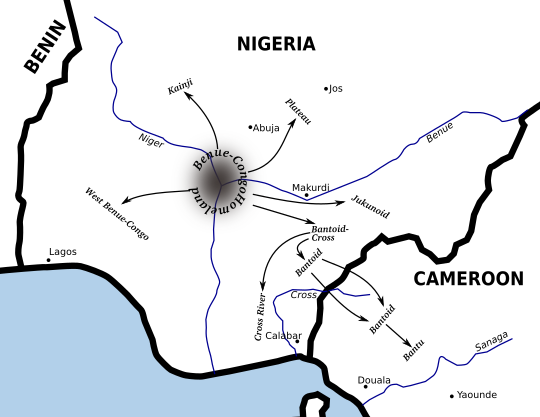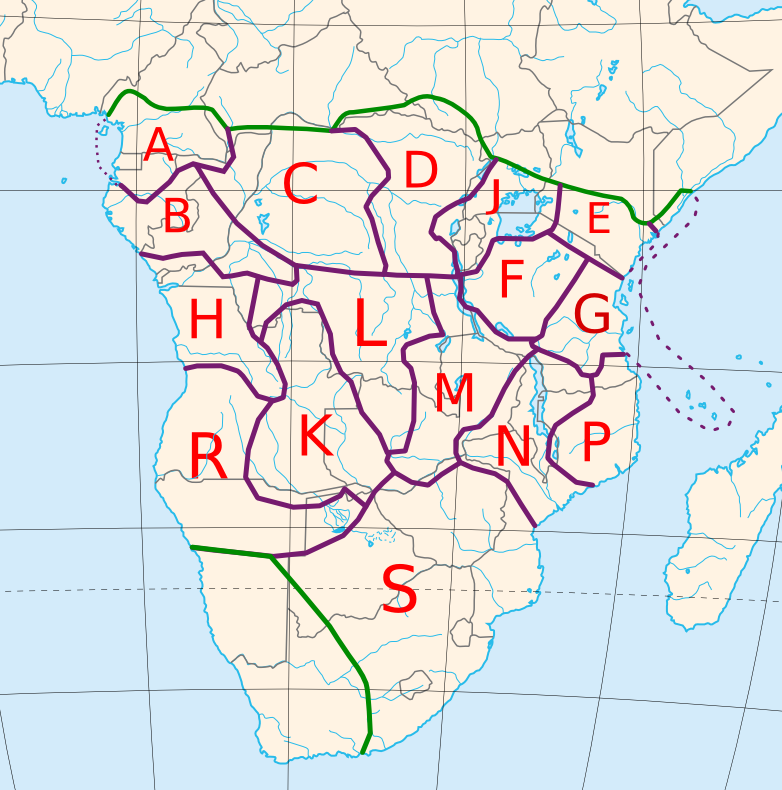|
Myene Language
Myene is a cluster of closely related Bantu varieties spoken in Gabon by about 46,000 people. It is perhaps the most divergent of the Narrow Bantu languages, , Ehret, 2009. though Nurse & Philippson (2003) place it in with the Tsogo languages
The Tsogo languages are a clade of Bantu languages coded Zone B.30 in Guthrie's classification. According to Nurse & Philippson (2003), the languages form a valid node. They are:
: Tsogo language, Tsogo (Getsogo), Himba language, Himba (Simba), P ... (B.30). The more distinctive varieties are Mpo ...
[...More Info...] [...Related Items...] OR: [Wikipedia] [Google] [Baidu] |
Gabon
Gabon ( ; ), officially the Gabonese Republic (), is a country on the Atlantic coast of Central Africa, on the equator, bordered by Equatorial Guinea to the northwest, Cameroon to the north, the Republic of the Congo to the east and south, and the Gulf of Guinea to the west. It has an area of and a population of million people. There are coastal plains, mountains (the Crystal Mountains (Africa), Cristal Mountains and the Chaillu Massif in the centre), and a savanna in the east. Libreville is the country's capital and largest city. Gabon's original inhabitants were the African Pygmies, Bambenga. In the 14th century, Bantu expansion, Bantu migrants also began settling in the area. The Kingdom of Orungu was established around 1700. France colonised the region in the late 19th century. Since its independence from France in 1960, Gabon has had four President of Gabon, presidents. In the 1990s, it introduced a multi-party system and a democratic constitution that aimed for a more tr ... [...More Info...] [...Related Items...] OR: [Wikipedia] [Google] [Baidu] |
Myene People
The Myene people are an ethnic group indigenous to the coastal regions of Gabon, in Central Africa. They are one of the smaller Bantu-speaking groups in the country but hold historical significance due to their early contact with European traders and explorers during the Atlantic trade era. Traditionally fishermen, traders, and skilled artisans, the Myene have played a notable role in the cultural and economic history of Gabon. History The Myene are considered one of the earliest Bantu groups to settle in the coastal areas of what is now Gabon, arriving through a series of migrations that began several centuries ago. By the 15th century, when Portuguese explorers first reached the region, Myene-speaking communities were already well established along the coast and river estuaries. Language The Myene speak several closely related dialects collectively known as the Myene languages, part of the wider Bantu family. Some of these dialects include Mpongwe, Orungu, Nkomi, and Akel ... [...More Info...] [...Related Items...] OR: [Wikipedia] [Google] [Baidu] |
Mpongwe People
The Mpongwe are an ethnic group in Gabon, notable as the earliest known dwellers around the estuary where Libreville is now located. History The Mpongwe language identifies them as a subgroup of the Myènè people of the Bantus, who are believed to have been in the area for some 2,000 years, although the Mpongwe clans likely began arriving in only the 16th century, possibly in order to take advantage of trading opportunities offered by visiting Europeans. The Mpongwe gradually became the middlemen between the coast and the interior peoples such as the Bakèlè and Séké. From about the 1770s, the Mpongwe also became involved in the slave trade. In the 1830s, Mpongwe trade consisted of slaves, dyewood, ebony, rubber, ivory, and gum copal in exchange for cloth, iron, firearms, and various forms of alcoholic drink. In the 1840s, at the time of the arrival of American missionaries and French naval forces, the Mpongwe consisted of 6,000-7,000 free persons and 6,000 slaves, orga ... [...More Info...] [...Related Items...] OR: [Wikipedia] [Google] [Baidu] |
Adyumba People
The Adyumba or Adjumba are a Bantu ethnic group in Gabon. They live mainly near Lake Azingo and in the Middle Ogooué River in the west coast of the country. They belong to the Myènè people and also speak the Myènè language of the Bantu languages. Their neighbors include the Mpongwe people The Mpongwe are an ethnic group in Gabon, notable as the earliest known dwellers around the estuary where Libreville is now located. History The Mpongwe language identifies them as a subgroup of the Myènè people of the Bantus, who are belie ... (who they were historically considered a clan of) and the Nkomi people. Today most live by fishing, food crops and small businesses. References Bibliography * David E. Gardinier, ''Historical dictionary of Gabon'', Scarecrow Press, Metuchen, Londres, 1994, 466 p. * Karl David Patterson, ''The northern Gabon coast to 1875'', Clarendon Press, Oxford, 1975, 167 p. * Albert Aléwina Chavihot et Jean-Avéno Davin, ''Les Adyumba du Gabon ... [...More Info...] [...Related Items...] OR: [Wikipedia] [Google] [Baidu] |
Bongo People (Gabon)
The Bongo people, also called Babongo or Bazimba, are an agricultural people of Gabon in equatorial Africa who are known as "forest people" due to their recent foraging economy. They are not to be confused with the autocrat leadership of Omar Bongo. As foreigners, the dictatorship of the Bongo family, selected this name to become familiar representatives of a nation. The name originates, respectfully, in consideration of Mbenga Pygmies, though they are not particularly short. They are originators of the Bwiti religion, based on consumption of the intoxicating hallucinogenic iboga plant. There is no one Bongo language. They speak the languages of their Bantu neighbors, with some dialectical differentiation due to their distinct culture and history; among these are Tsogo (the Babongo-Tsogho), Nzebi (the Babongo-Nzebi), West Téké (the Babongo-Iyaa), and Lumbu (the Babongo-Gama), and Myene (the Babongo-Akoa). Yasa in Gabon is reportedly spoken by "Pygmies"; Yasa-speakers s ... [...More Info...] [...Related Items...] OR: [Wikipedia] [Google] [Baidu] |
Atlantic–Congo Languages
The Atlantic–Congo languages make up the largest demonstrated family of languages in Africa. They have characteristic noun class systems and form the core of the Niger–Congo family hypothesis. They comprise all of Niger–Congo apart from Mande, Dogon, Ijoid, Siamou, Kru, the Katla and Rashad languages (previously classified as Kordofanian), and perhaps some or all of the Ubangian languages. Hans Gunther Mukanovsky's "Western Nigritic" corresponded roughly to modern Atlantic–Congo. In the infobox, the languages which appear to be the most divergent are placed at the top. The Atlantic branch is defined in the narrow sense (as Senegambian), while the former Atlantic branches Mel and the isolates Sua, Gola and Limba are split out as primary branches; they are mentioned next to each other because there is no published evidence to move them; Volta–Congo is intact apart from Senufo and Kru. ''Glottolog'', based primarily on Güldemann (2018), has a more limi ... [...More Info...] [...Related Items...] OR: [Wikipedia] [Google] [Baidu] |
Benue–Congo Languages
Benue–Congo (sometimes called East Benue–Congo) is a major branch of the Volta-Congo languages which covers most of Sub-Saharan Africa. Subdivisions Central Nigerian (or Platoid) contains the Plateau languages, Plateau, Jukunoid languages, Jukunoid and Kainji languages, Kainji families, and Bantoid–Cross combines the Bantoid languages, Bantoid and Cross River languages, Cross River groups. Bantoid is only a collective term for every subfamily of Bantoid–Cross except Cross River, and this is no longer seen as forming a valid branch, however one of the subfamilies, Southern Bantoid, is still considered valid. It is Southern Bantoid which contains the Bantu languages, which are spoken across most of Sub-Saharan Africa. This makes Benue–Congo one of the largest subdivisions of the Niger–Congo language family, both in number of languages, of which ''Ethnologue'' counts 976 (2017), and in speakers, numbering perhaps 350 million. Benue–Congo also includes a few minor Languag ... [...More Info...] [...Related Items...] OR: [Wikipedia] [Google] [Baidu] |
Bantoid Languages
Bantoid is a major branch of the Benue–Congo language family. It consists of the Northern Bantoid languages and the Southern Bantoid languages, a division which also includes the Bantu languages that constitute the overwhelming majority and after which Bantoid is named. History The term "Bantoid" was first used by Krause in 1895 for languages that showed resemblances in vocabulary to Bantu. Joseph Greenberg, in his 1963 ''The Languages of Africa'', defined Bantoid as the group to which Bantu belongs together with its closest relatives; this is the sense in which the term is still used today. However, according to Roger Blench, the Bantoid languages probably do not actually form a coherent group. Internal classification A proposal that divided Bantoid into Northern Bantoid languages, North Bantoid and Southern Bantoid languages, South Bantoid was introduced by Williamson. In this proposal, the Mambiloid and Dakoid languages (and later Tikar language, Tikar) are grouped together ... [...More Info...] [...Related Items...] OR: [Wikipedia] [Google] [Baidu] |
Bantu Languages
The Bantu languages (English: , Proto-Bantu language, Proto-Bantu: *bantʊ̀), or Ntu languages are a language family of about 600 languages of Central Africa, Central, Southern Africa, Southern, East Africa, Eastern and Southeast Africa, Southeast Africa. They form the largest branch of the Southern Bantoid languages. The total number of Bantu languages is estimated at between 440 and 680 distinct languages, depending on the definition of Dialect#Dialect or language, "language" versus "dialect"."Guthrie (1967–71) names some 440 Bantu 'varieties', Grimes (2000) has 501 (minus a few 'extinct' or 'almost extinct'), Bastin ''et al.'' (1999) have 542, Maho (this volume) has some 660, and Mann ''et al.'' (1987) have ''c.'' 680." Derek Nurse, 2006, "Bantu Languages", in the ''Encyclopedia of Language and Linguistics'', p. 2:Ethnologue report for Southern Bantoid" lists a total of 535 languages. The count includes 13 Mbam languages, which are not always included under "Narrow Bantu". ... [...More Info...] [...Related Items...] OR: [Wikipedia] [Google] [Baidu] |
Guthrie Classification Of Bantu Languages
The 250 or so "Narrow Bantu languages" are conventionally divided up into geographic zones first proposed by Malcolm Guthrie (1967–1971). These were assigned letters A–S and divided into decades (groups A10, A20, etc.); individual languages were assigned unit numbers (A11, A12, etc.), and dialects further subdivided (A11a, A11b, etc.). This coding system has become the standard for identifying Bantu languages; it was a practical way to distinguish many ambiguously named languages before the introduction of ISO 639-3 coding, and it continues to be widely used. Only Guthrie's Zone S is (sometimes) considered to be a genealogical group. Since Guthrie's time a Zone J (made of languages formerly classified in groups D and E) has been set up as another possible genealogical group bordering the Great Lakes. The list is first summarized, with links to articles on accepted groups of Bantu languages (bold decade headings). Following that is the complete 1948 list, as updated by Guthr ... [...More Info...] [...Related Items...] OR: [Wikipedia] [Google] [Baidu] |
Kele–Tsogo Languages
Kele–Tsogo is a proposed intermediate group of Bantu language The Bantu languages (English: , Proto-Bantu language, Proto-Bantu: *bantʊ̀), or Ntu languages are a language family of about 600 languages of Central Africa, Central, Southern Africa, Southern, East Africa, Eastern and Southeast Africa, South ...s, coded Zone B.10–30 in Guthrie's classification. According to Nurse & Philippson (2003), they are: * Kele (B.20) *Tsogo–Myene ** Myene (B.10) ** Tsogo (B.30) References * {{Bantu-lang-stub ... [...More Info...] [...Related Items...] OR: [Wikipedia] [Google] [Baidu] |
Tsogo Languages
The Tsogo languages are a clade of Bantu languages coded Zone B.30 in Guthrie's classification. According to Nurse & Philippson (2003), the languages form a valid node. They are: : Tsogo language, Tsogo (Getsogo), Himba language, Himba (Simba), Pinzi language, Pinzi, Vove language, Vove, Kande language, Kande Nurse & Philippson also include (B.10) Myene language, Myene, following Piron (1997), who makes Tsogo and Myene together a divergent branch of Bantu. Maho adds Viya language, Viya (Eviya) and Bongwe language, Bongwe. Phonology Source: Consonants Vowels References Tsogo languages, {{Bantu-lang-stub ... [...More Info...] [...Related Items...] OR: [Wikipedia] [Google] [Baidu] |

